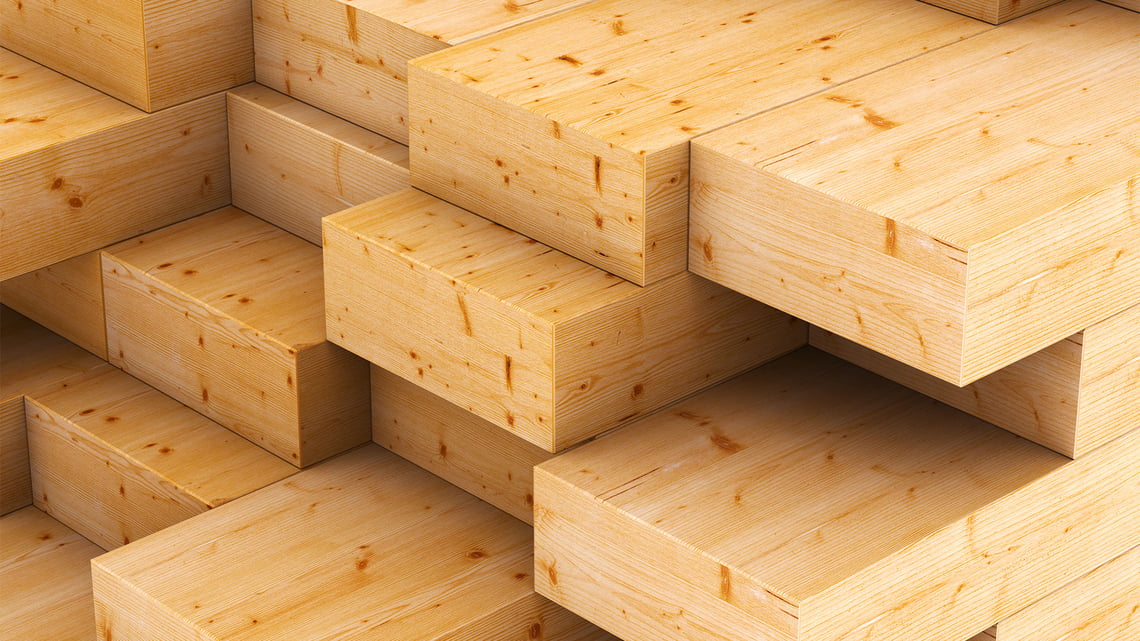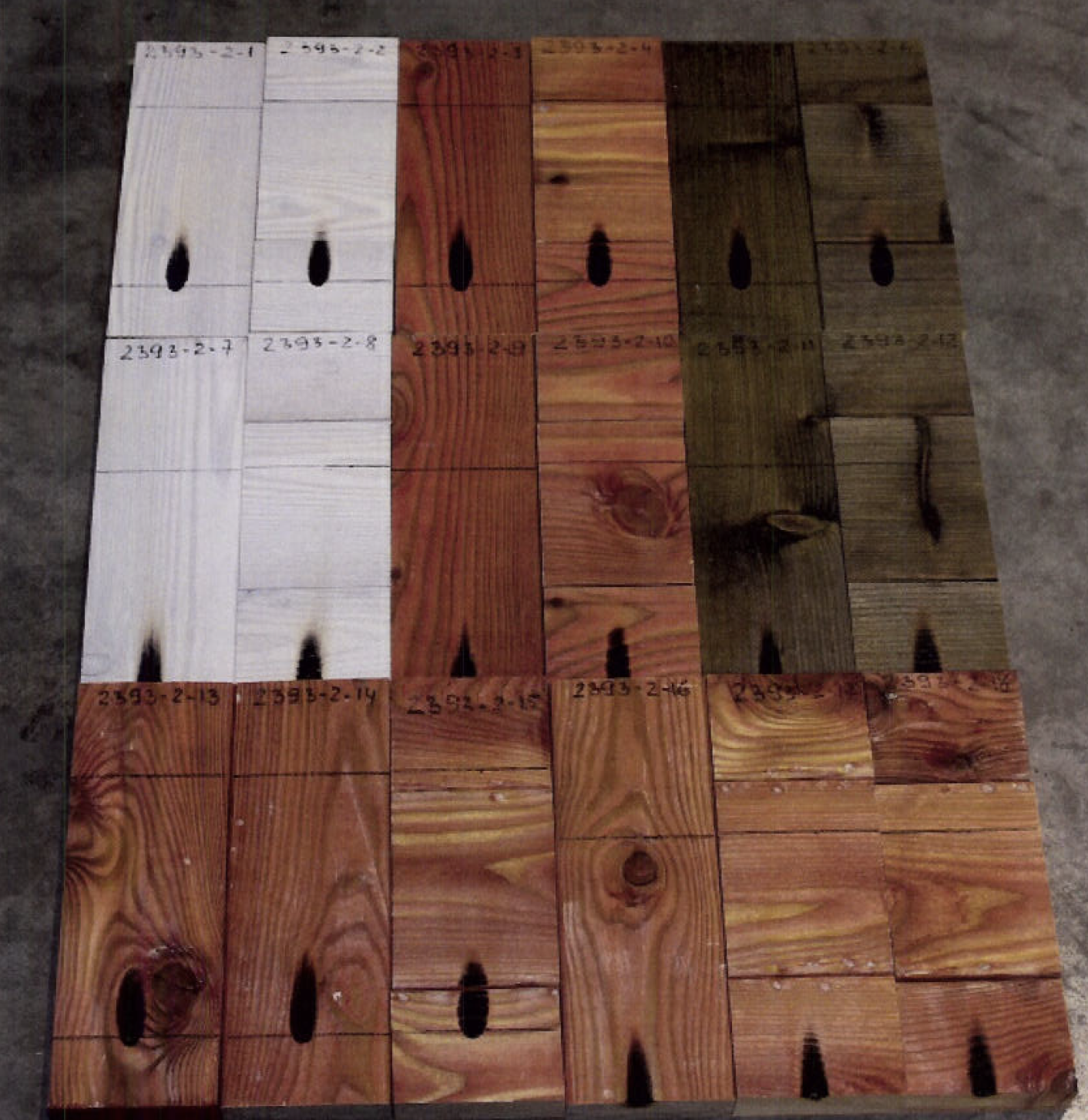
2 5 2019 | Fire protection | Fire regulations

2 5 2019 | Fire protection | Fire regulations
The growing popularity of timber structures in commercial and public construction projects increases the demand for fire protected wood products. Even though designers are generally aware of the fire classes required from the surface materials used on buildings, there are many questions to do with fire testing and fire classification. Expert views on the topic are here provided by Professor Simo Hostikka from the Department of Civil Engineering at Aalto University in Finland.
The reaction to fire performance of building materials is tested for two purposes. The aim of standard product testing is to determine their fire class in accordance with the building regulations, which primarily serves the designers, builders and building control authorities. The manufacturers of construction products, on the other hand, examine and test the fire performance of products when the products are just being developed. Different objectives require different testing methods.
In Finland, the fire classification of building materials is carried out in accordance with the classification standard SFS-EN 13501-1 + A1. The European standard is based on three fire testing methods that are used to divide products into so-called Euroclasses. In addition to the seven main classes (A1-F), there are additional classes to describe smoke production (classes s1, s2 and s3) and the formation of flaming droplets (classes d1, d2 and d3).
| A1 | Products do not contribute to a fire at any point |
| A2 | Products contribute to a fire to an extremely small extent |
| B | Products contribute to a fire to a very small extent |
| C | Products contribute to a fire to a small extent |
| D | Products contribute to a fire to a limited extent |
| E | Products contribute to a fire to a moderate extent |
| F | Reaction to fire performance has not been determined |
| s1 | Smoke production is very limited |
| s2 | Smoke production is limited |
| s3 | Smoke production is not limited |
| d0 | No flaming droplets or particles |
| d1 | Limited quantity of flaming droplets or particles |
| d2 | Flaming droplets or particles are not limited |
Products are usually tested with regard to their tendency to spread fire (SBI, EN 13823) as well as non-combustibility (EN ISO 1182), calorific value (EN ISO 1716) or ignitability (EN ISO 11925-2).

The ignitability test, products are exposed to a small flame (EN ISO 11925-2)
Untreated wood belongs to class D. Wood products with different treatments can, as a general rule, at most meet the requirements of Euroclass B-s1, d0. This means that the products contribute to a fire to a very small extent, their smoke production is very limited and they do not form flaming droplets or particles.
In Finland, the fire classes required from building materials in different end use locations are specified in the Decree of the Ministry of the Environment on the Fire Safety of Buildings (848/2017).
The single burning item test (SBI) is especially suited for testing products used on the surface layers of buildings in order to determine their fire class. It is not possible to control precisely how movable items in a building react to fire and therefore the ability of interior surfaces to restrict the development of a fire and smoke production is of great importance to the safety of the users. This applies, for example, to buildings with large numbers of people such as schools, health care facilities, hotels and large business premises.
The purpose of the SBI test is to test products, for example CLT panels, in the exact structure where they will be used in reality. The test models a likely situation in which a relatively small fire occurs indoors, for example a burning waste basket.
The product material is used to build a structure forming a corner on a non-combustible surface with its sides 1 m and 0.5 m wide and both 1.5 m high. This also makes it possible to test the impact of joints and fixings on the fire as they would be in the actual structure. In order to perform the test, a gas burner is placed against the structure and the possible spreading of the fire, smoke production and formation of flaming droplets is documented.
SBI testing of interior panels
It is important to take into consideration the actual use of the structure being tested. In other words, one can build a structure that is as realistic as possible in terms of the framework and fixings, with its reaction to fire properties matching the intended use of the wood product.
The surface treatments used on wood products, for example fire protection, often increase smoke production. However, it has been proven through testing that wood products protected with the non-toxic NT DECO meet the requirements of fire class B-s1, d0, which is required in higher risk building types such as health care facilities.
The fire testing of construction products for both product development and classification purposes is performed by accredited commercial testing laboratories. However, a CE marked wood product that meets the fire class requirements in a test only performs similarly when installed and treated the same way as in the test situation.
For example, if a fire protected product is repainted or exposed to the weather, it may reduce the product’s fire resistance and speed up the development of a fire. The uncertainties regarding the end use and conditions can only be eliminated if the product is also tested after repainting or weather exposure. In terms of fire safety and cost-effectiveness, the most sensible solution is to use ready-to-install fire protected products of class B-s1, d0 for surface structures (e.g. exterior and interior panels industrially treated with translucent NT DECO), ensuring that the products meet the requirements of the location.
In Finland, the same SBI fire testing also applies to regulations concerning external cladding because there is no separate national or European standard for facades. Fire testing of aged products is also not required. This is a problem because the most likely fire scenario for facades is heavy exposure to flames from a fire in an adjacent room – it is quite far from a burning waste basket. There is clearly a need for common Europe-wide regulations regarding the fire resistance of facades and the process to reach this goal began in 2018.
The reaction to fire performance of surface materials used in construction is also examined when developing existing or entirely new products. This is done by using the above-mentioned testing methods developed for classification purposes as well as small-scale analyses to reflect the reaction to fire performance of materials.
The most important method used in the development of wood products is the cone calorimeter test (ISO 5660-1). In the test, a 10 cm by 10 cm test piece is exposed to strong thermal radiation and then the ignition time, heat release rate and mass loss are measured. In many cases, the cone calorimeter results help forecast the SBI test results, at least roughly. This makes it possible to reduce the number of SBI tests performed on different product options.
When examining the fire protection of synthetic materials, it is also quite common to perform milligram level tests, for example a thermogravimetric analysis (TGA) and differential scanning calorimetry. In these tests, a small material sample is heated in a furnace at a constant rate and the changes in its mass or thermal energy are measured. The use of these methods when developing the fire protection of wood products is not very common and they cannot be applied to the examination of surface treatments.

Choose Nordic quality for sustainable fire protection of wooden construction products.



Keep on track about fire safety of wood products. Our newsletter provides you with the latest ideas and solutions.

